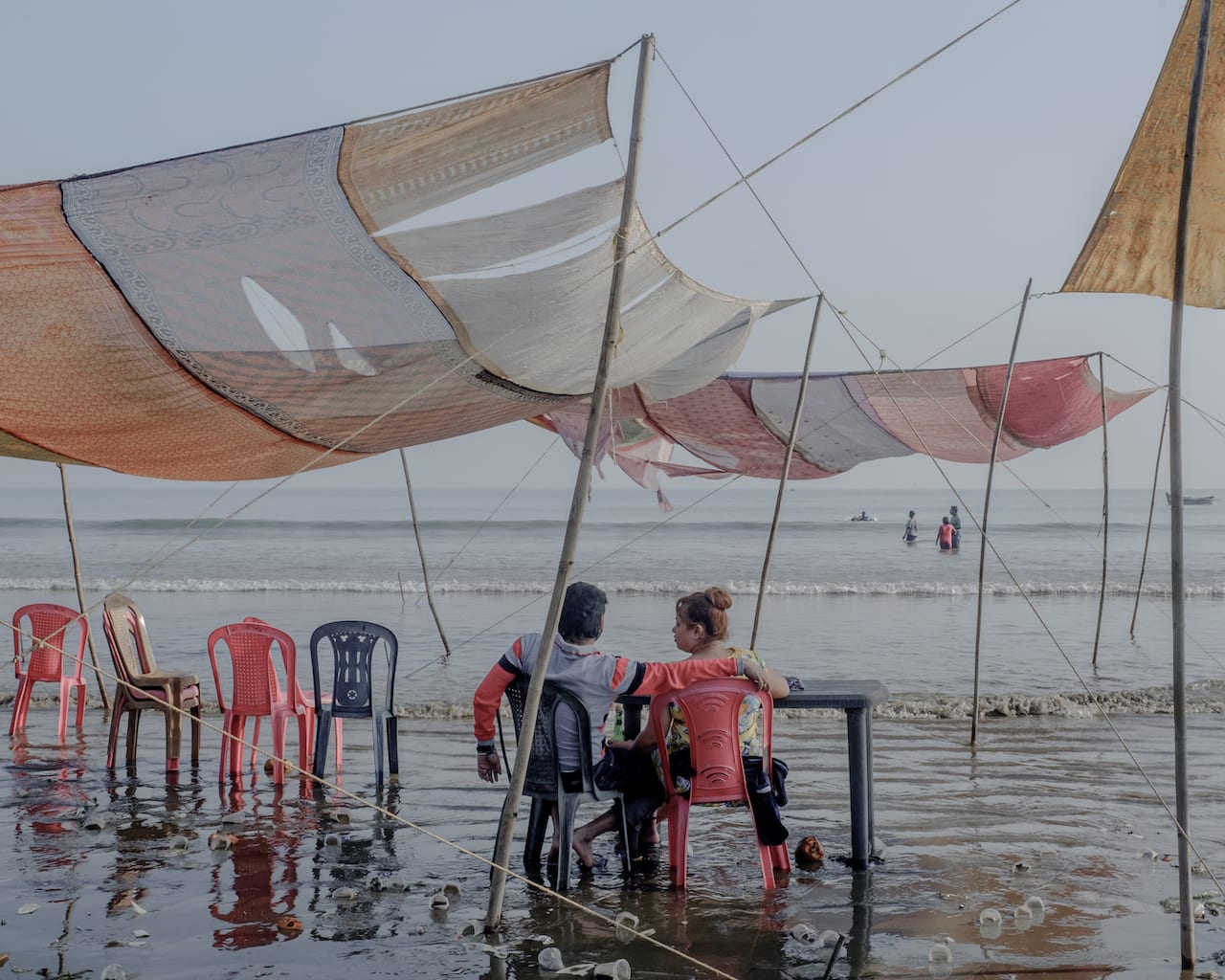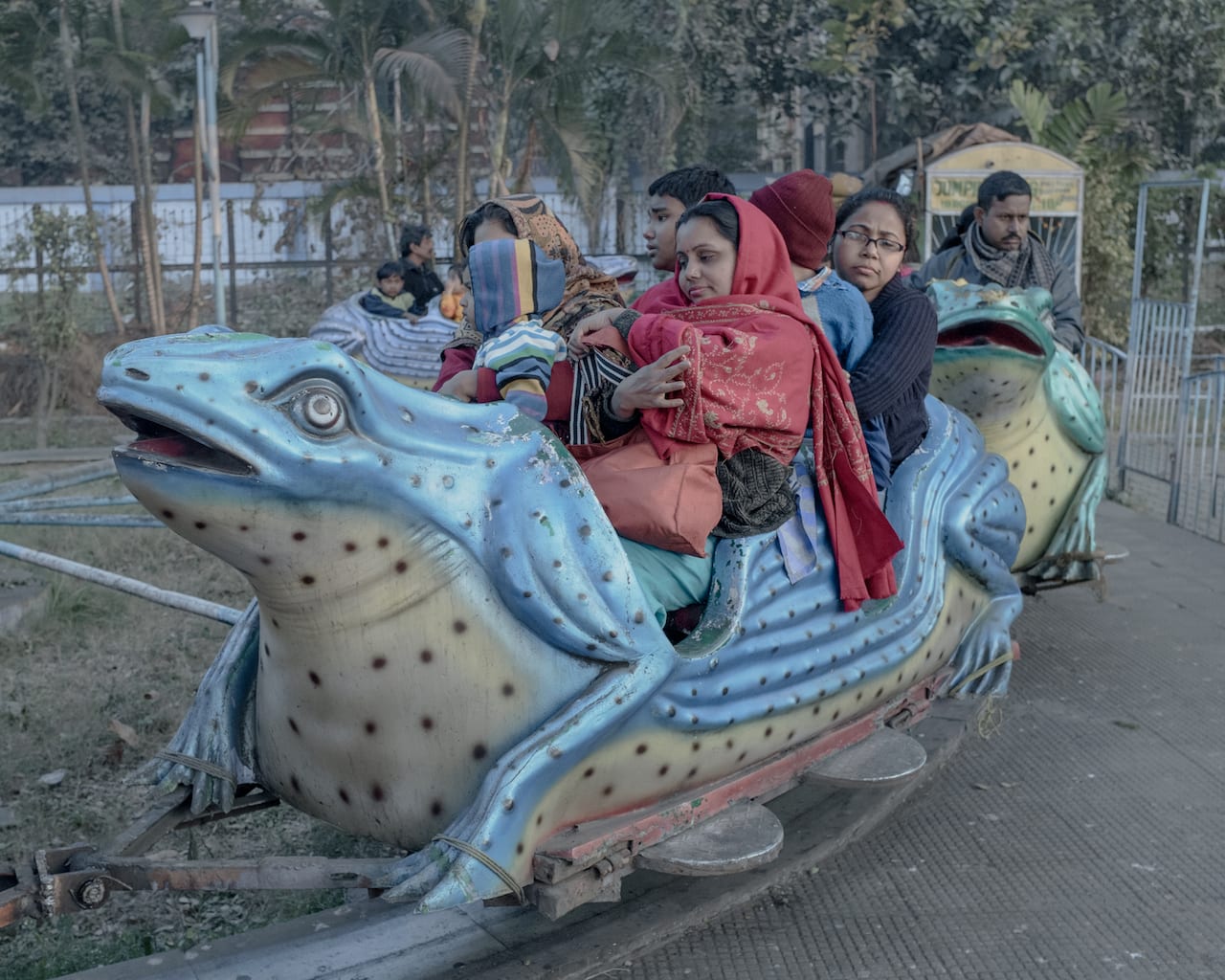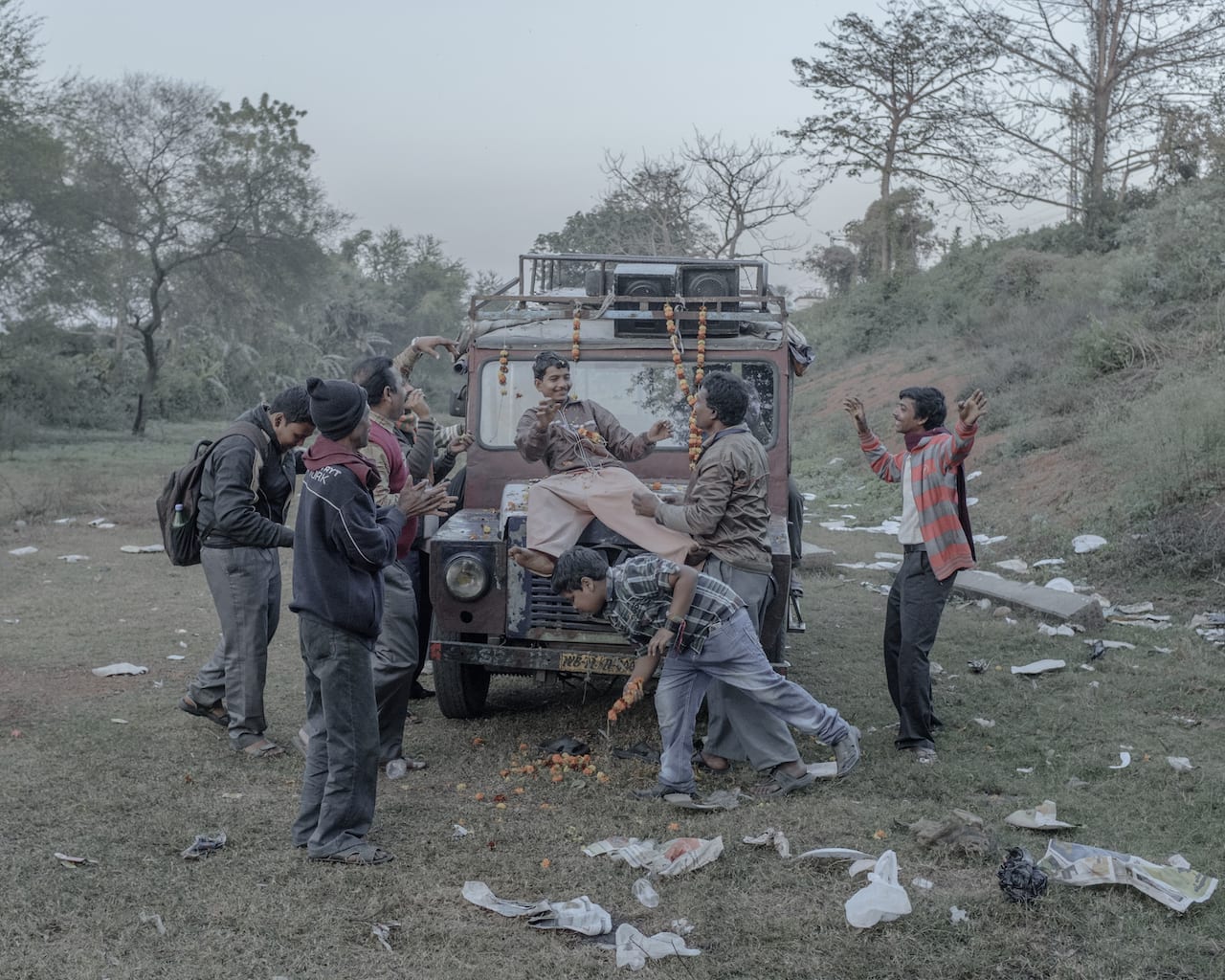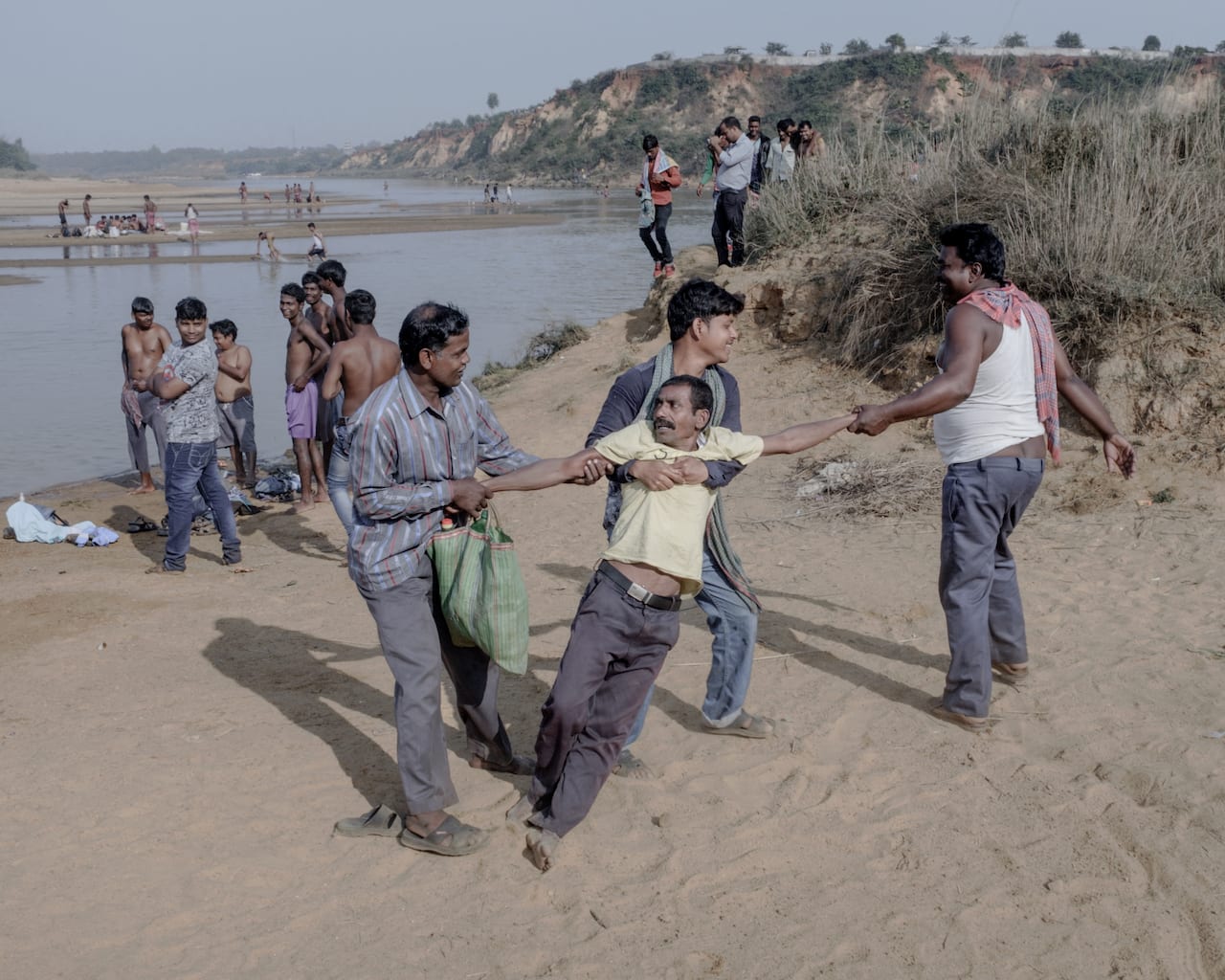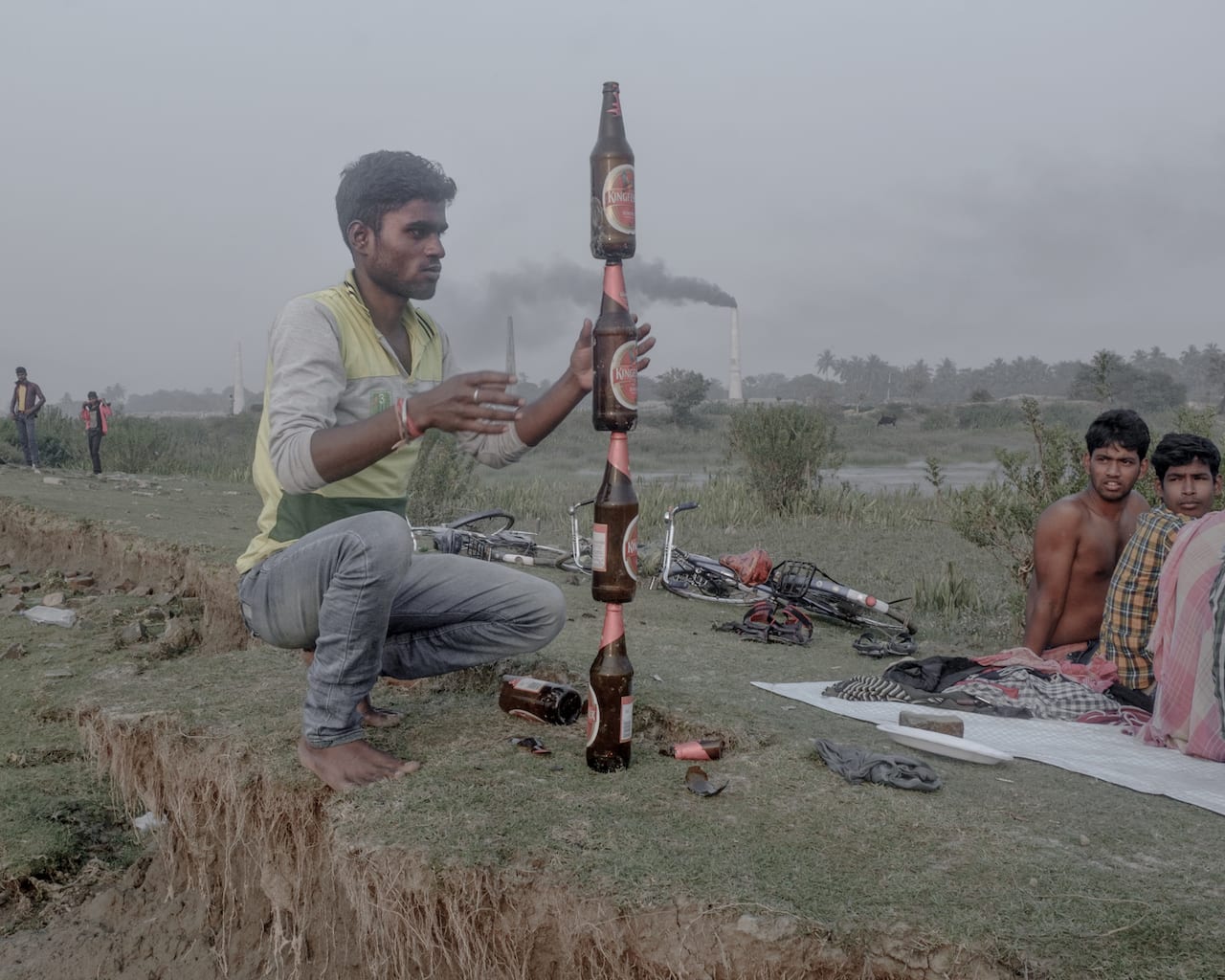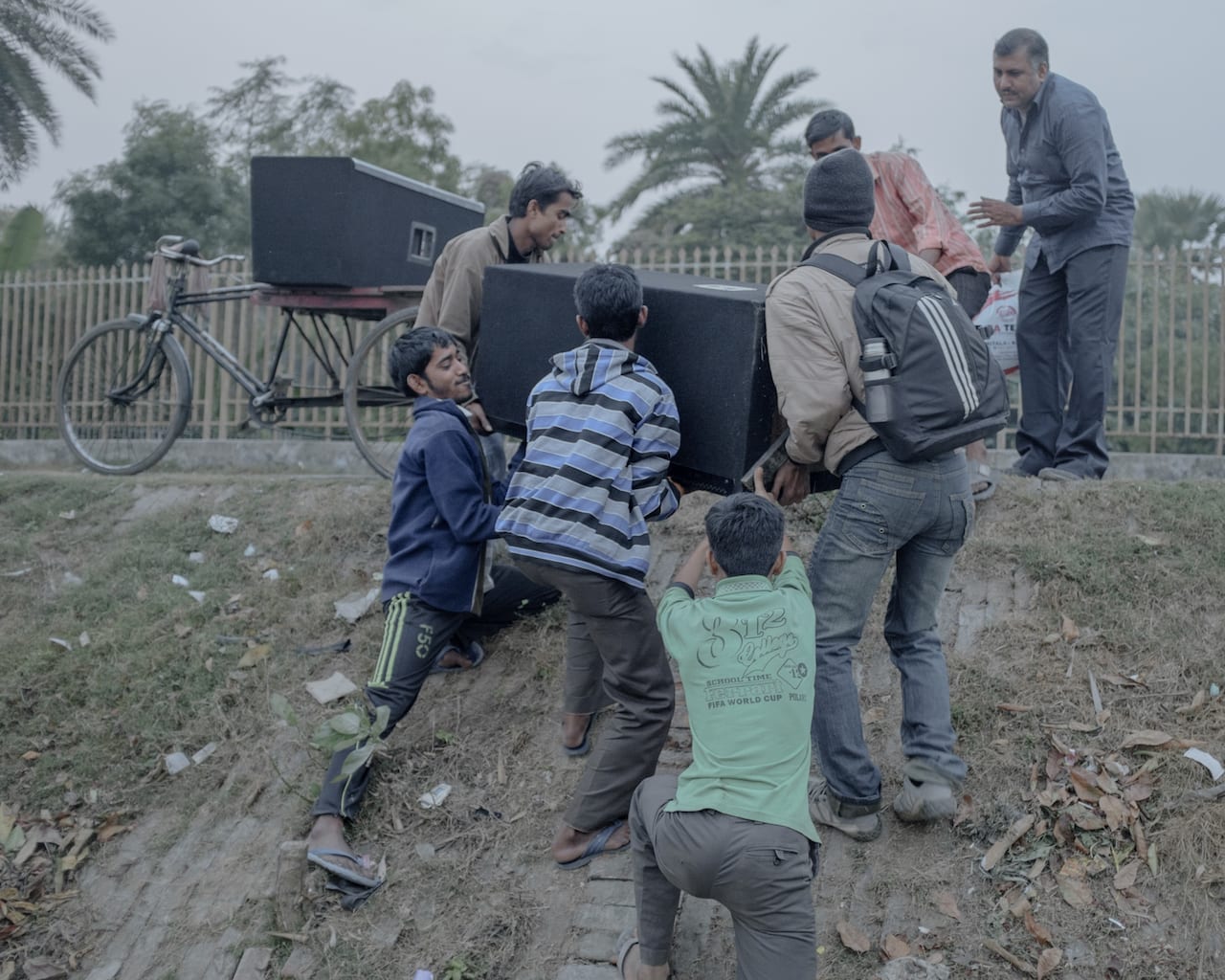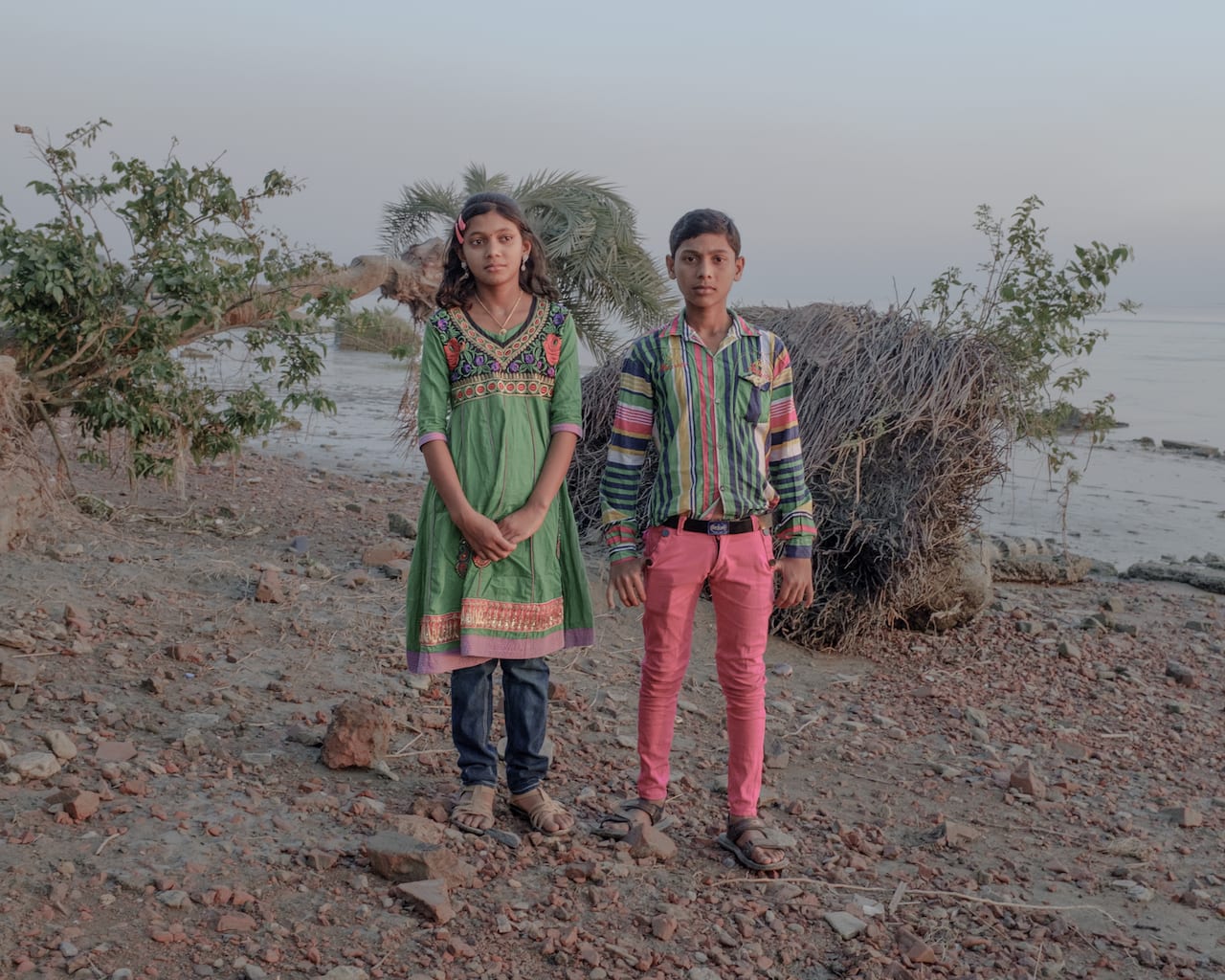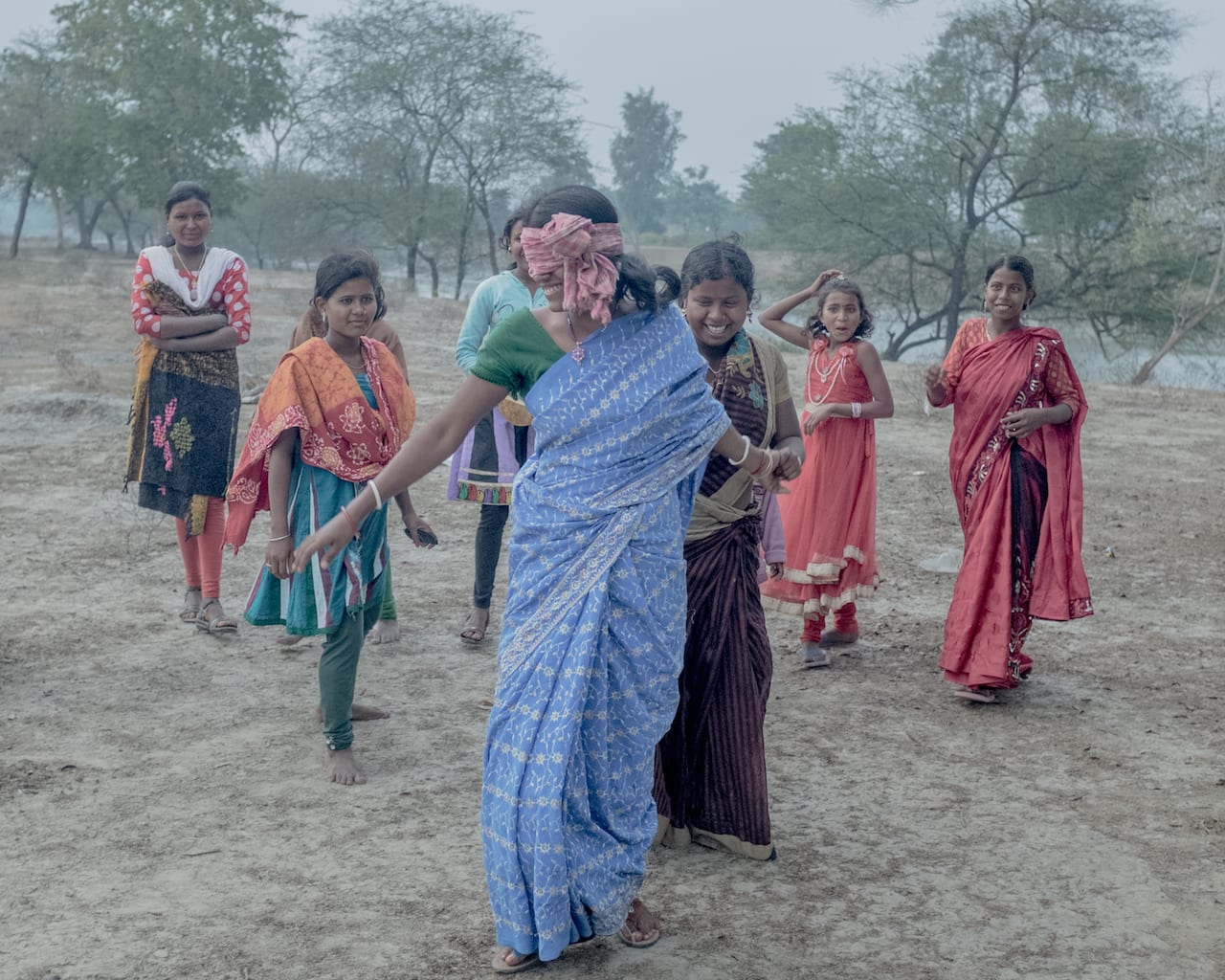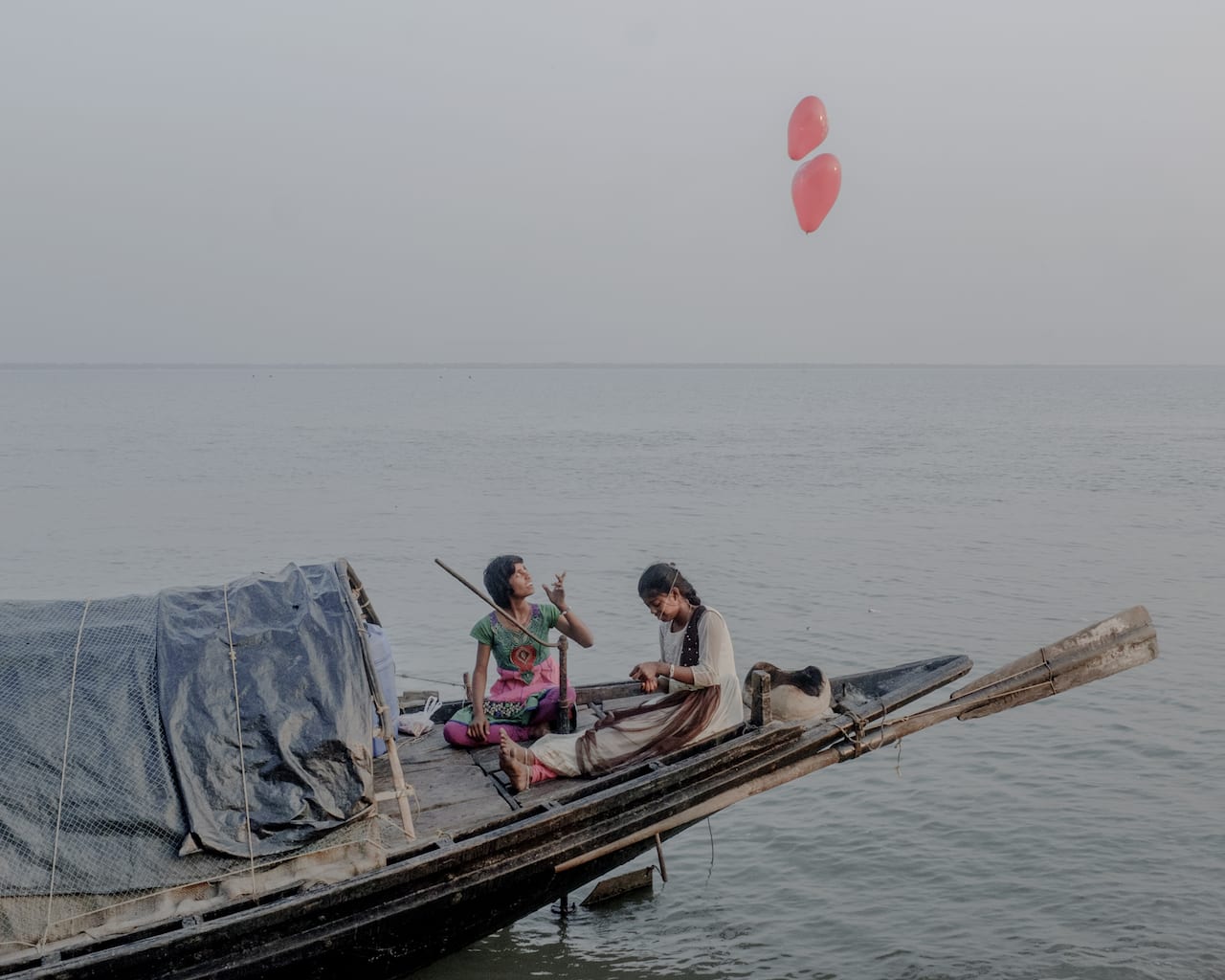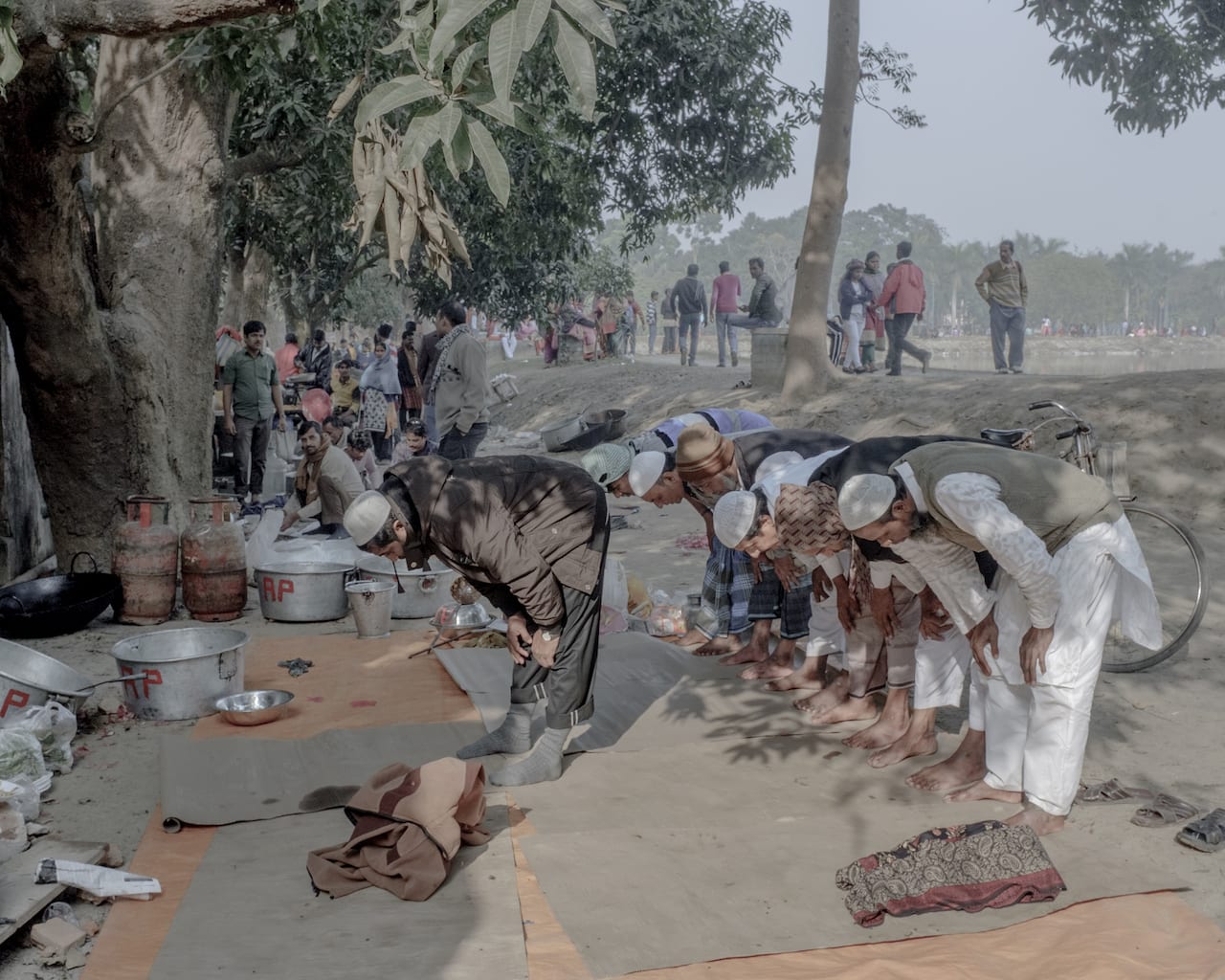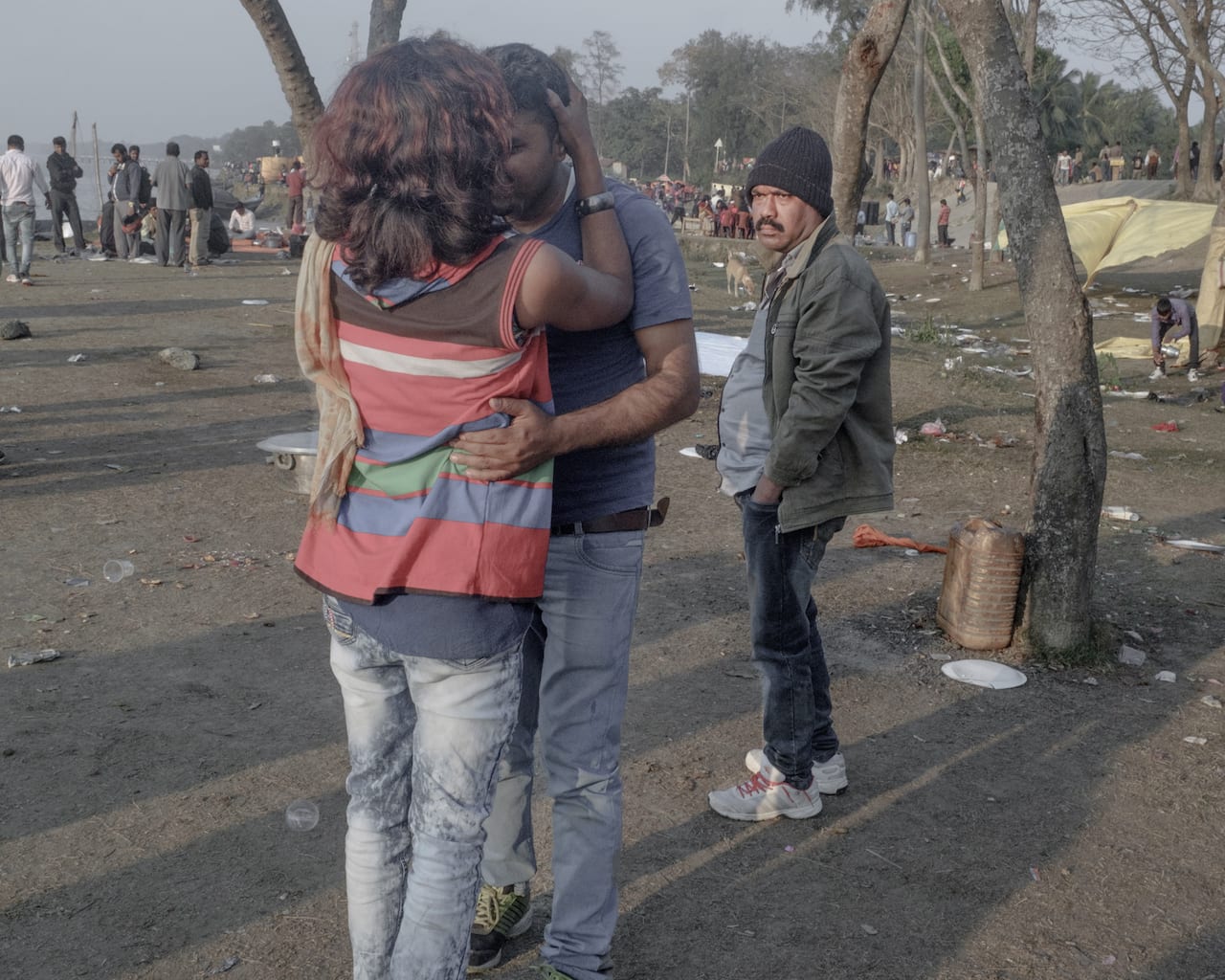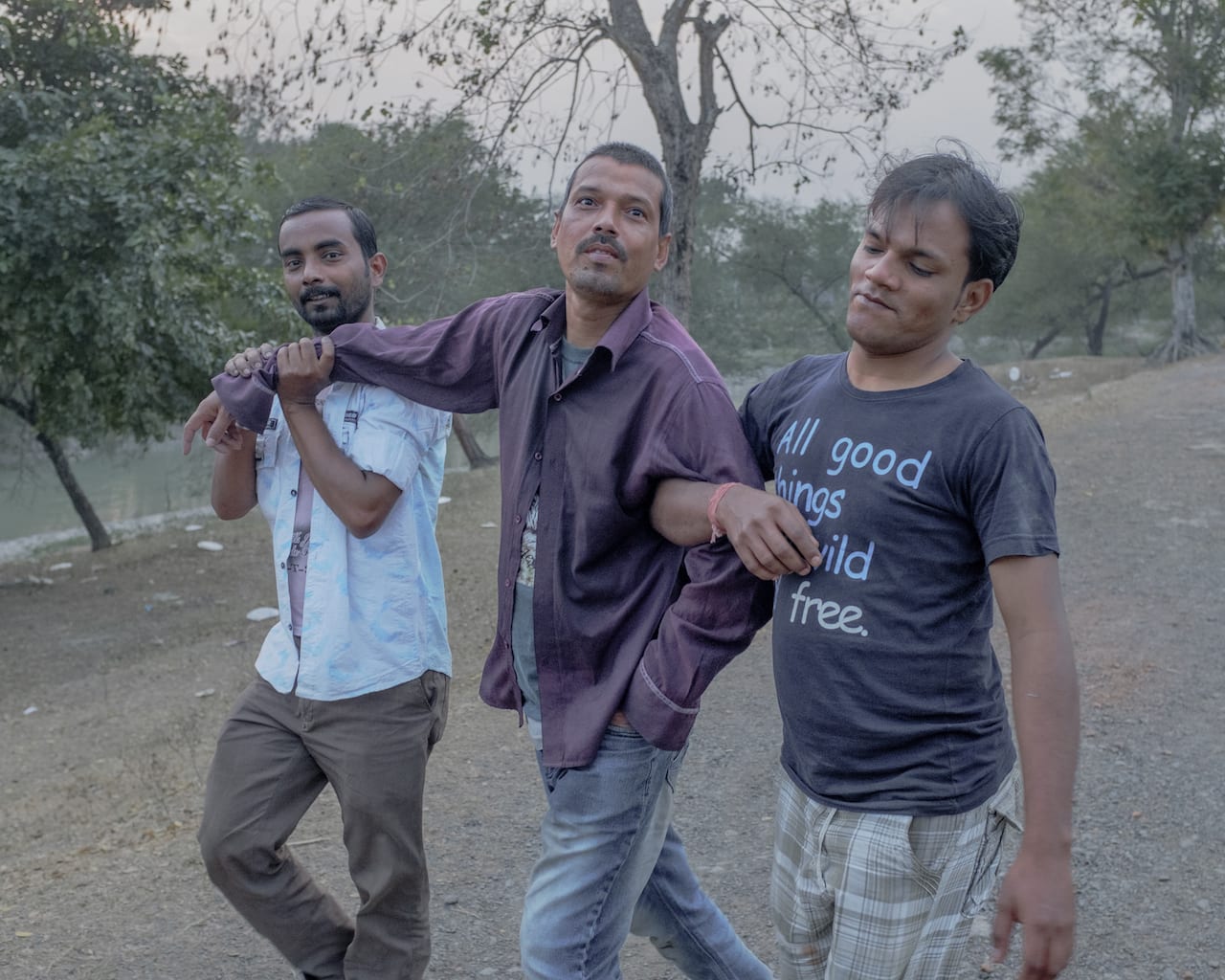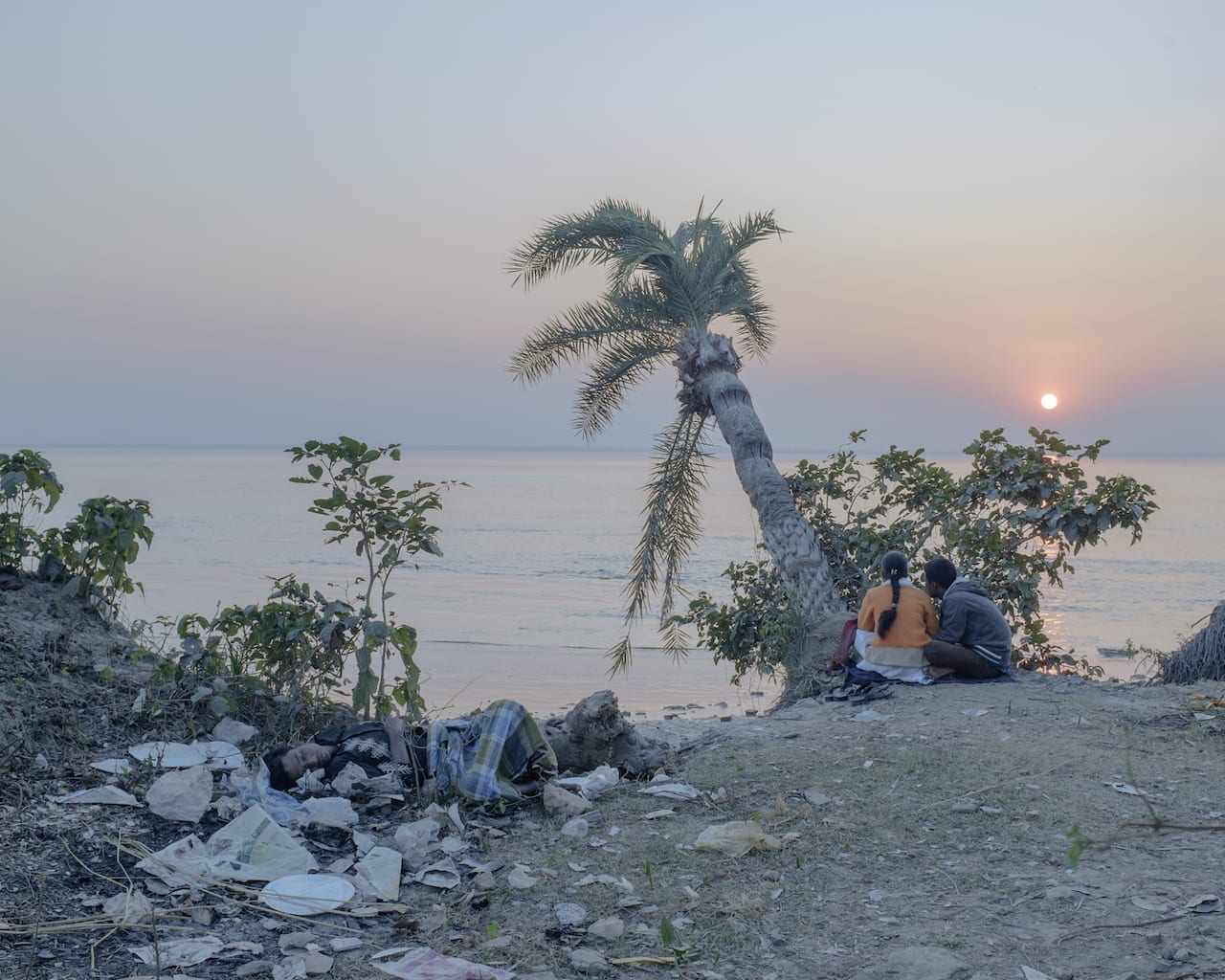Indian photographer Arko Datto (b.1986) completed two masters degrees in theoretical physics and mathematics before deciding to take a “leap of faith into photography”. After studying photography at the Danish School of Journalism in Aarhus, his long-term projects have since been published in leading international publications, such as TIME and National Geographic. He joined the prestigious NOOR agency last October.
For PIK-NIK, Datto spent the last five winter seasons photographing picnic spots across eastern India, primarily in West Bengal but also in Jharkhand and Orissa. Here, families and colleagues converge for a day of food, drink and revelry before departing at sunset, leaving piles of rubbish in their wake.
“Vats of freshly slaughtered chicken, sacks of vegetables and an arsenal of pots, pans and gas cylinders are lugged along, taking cooking en plein air to a whole new level,” says Datto.
“Yet, the most curious detail by far are the extravagant loudspeakers that come with nearly every picnic group,” he adds – speakers which are accompanied by electricity generators transported in hand-drawn carts and minivans. “From the speakers, songs from recent Bengali and Hindi blockbusters blare high above permissible decibels, while drunk on whiskey and rum, men of all ages brawl, dance their hearts out or pass out, as wives, girlfriends and children watch.”
The visual representations of giant loudspeakers and open-air cooking “work on a synaesthetic level,” explains Datto. “Apart from challenging the predominantly visual grammar of photography, this multi-sensory quality also creates an immersive effect, allowing us to enter the experience as such.”
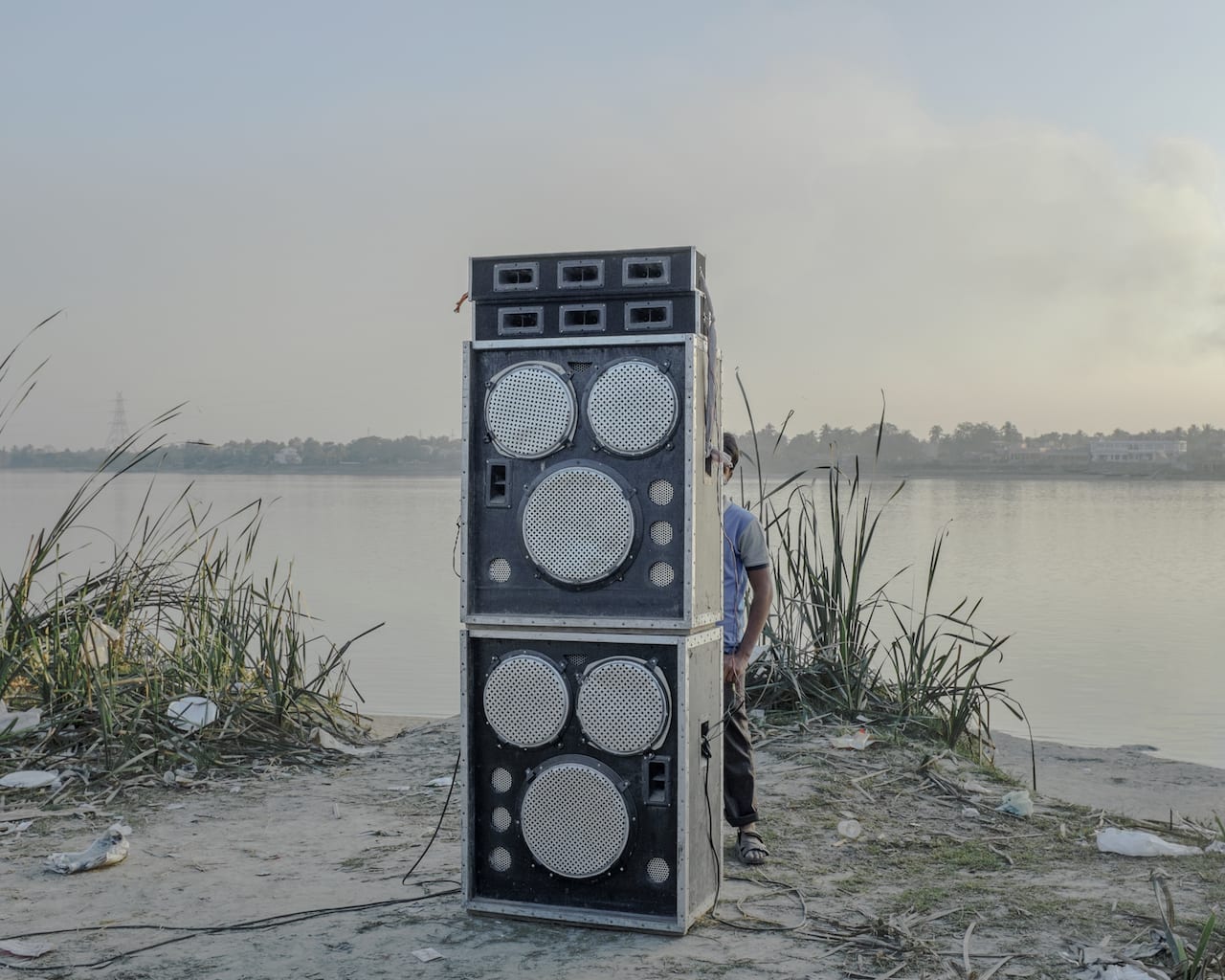
When evening falls and the picnic goers make their way home, broken bottles and styrofoam plates litter the ground. As the picnics are held by the innumerable rivers in the region — including the Ganges, Rupnarayan and Ichamati, plus the many others that feed into the Sundarbans – rubbish invariably ends up in the water. “The intersection of land and water offers a perfect backdrop for the garbage that remains and the garbage that floats away on the bank and shoal of time,” he says, drawing attention to the stark environmental message in his series, especially of human negligence.
This aspect of the series is an ongoing theme in Datto’s work – though he often likes to photograph people, he’s interested in moments that reveal a glimpse into what it means to exist in today’s world, “fusing macroscopic and microscopic narratives of race, class, gender, religion and politics”.
“This work attempts to capture the passage of time, not necessarily in a chronological manner but in fragments from personal and subjective vantage points,” he continues. “The images of preparation, carousal and departure observe a festive and yet muted temporality as the series explores nuances of communal life in its discrete moments of peopled solitude.”
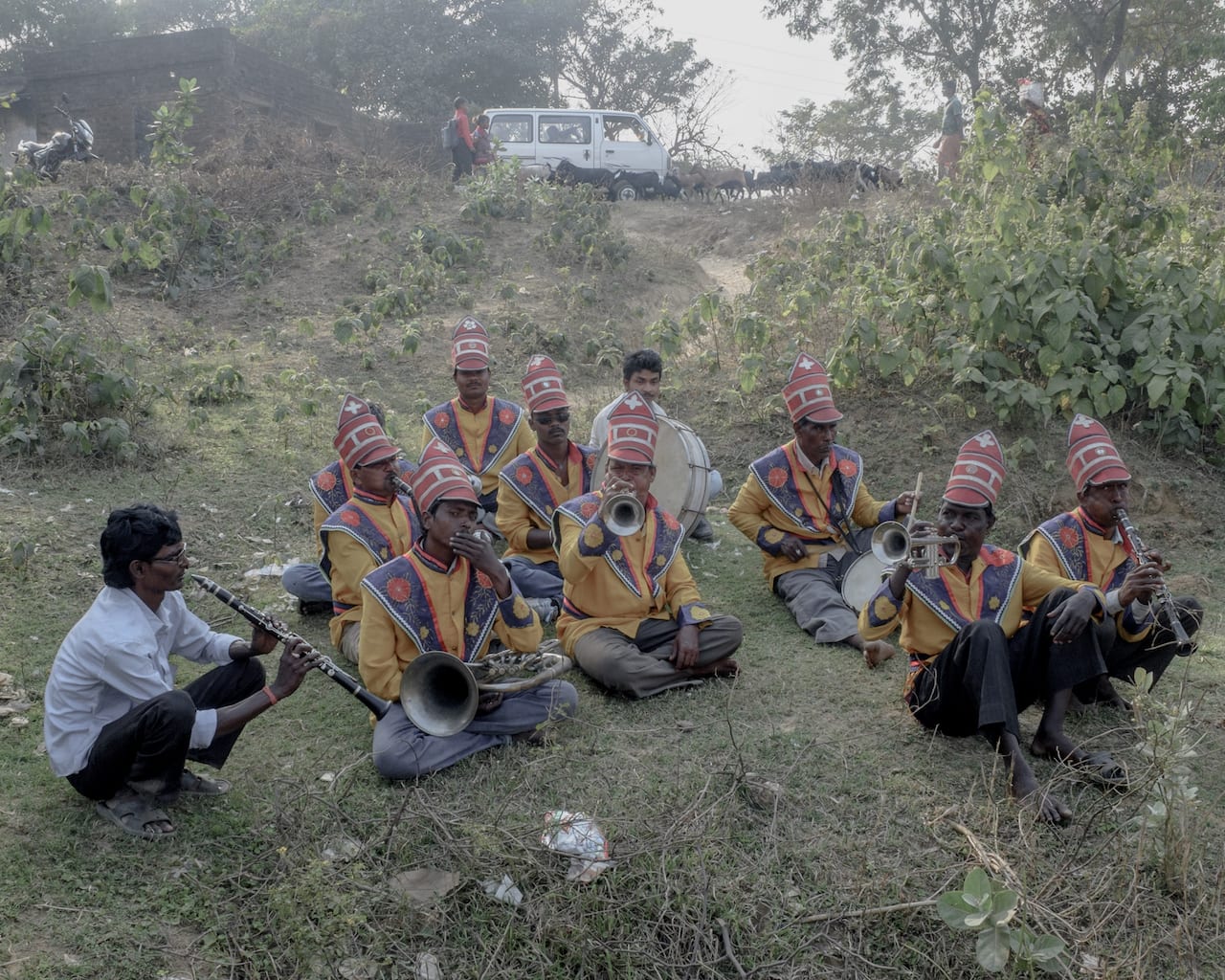
From the vacant stare of a solitary cook to the semi-drunken bonding of men, Datto points out the subtle class dynamics embodied in the picnic experience. “There is also a stark note of gender segregation as we keep encountering all-male or all-female gatherings,” he adds. “In essence, there is a lot going on all around. PIK-NIK tries to make sense of this social occurrence and shed light on this wintry zeitgeist.”
And despite the apparent tranquility in the images, Datto says it wasn’t always easy to shoot this project. “There is a latent tension intrinsic to most of these situations,” he says. “The energy in these spaces is often quite unstable. Thus, perfectly calm settings can suddenly erupt in violence without warning, so I tend to always be on my toes.”
arkodattovisuals.com Arko Datto’s PIK-NIK was exhibited in JaipurPhoto earlier this year, which was guest-curated by Aaron Schuman.
bjp-online has previously featured Arko Datto’s project Snakefire https://www.1854.photography/2017/07/exclusive-a-sneak-peek-at-arko-dattos-new-series-snakefire/
